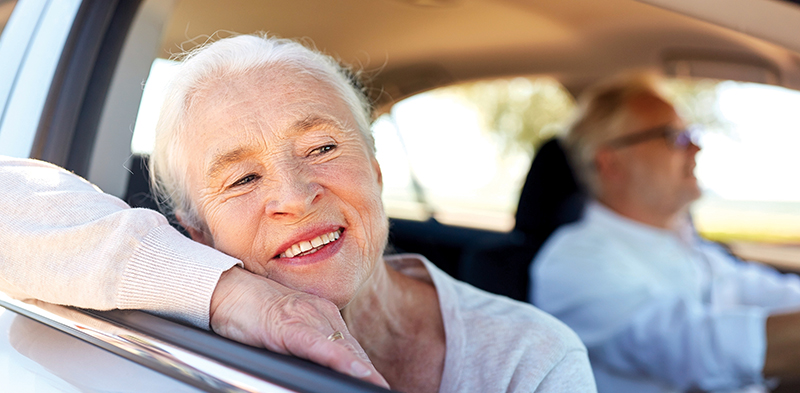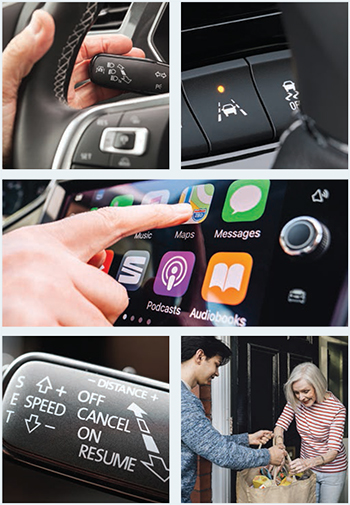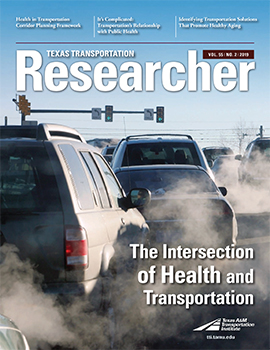The quality of life and transportation access are inescapably tied, no matter who you are. But that link is especially critical if you’re among those Americans classified as older.
And older is a fast-growing group. The Baby Boomer generation will be over the age of 65 by 2030, according to the U.S. Census Bureau, meaning that one in every five Americans will be of traditional retirement age (65 or older). By 2050, the bureau predicts, the 65-plus crowd will outnumber children (18 and under) for the first time in the nation’s history.

As these trends unfold, research from 2015 by the National Council on Aging tells us more about this population segment. One-third say that not being able to leave home or drive is a major concern, and 42 percent worry about becoming a burden to others. And, according to the U.S. Government Accountability Office, roughly half of older American households have no retirement savings account, a financial constraint that could limit travel options and challenge efforts to be self-reliant.
Assistant Research Scientist Ben Ettelman and his team of Texas A&M Transportation Institute (TTI) researchers studied these trends and their implications in Identifying Transportation Solutions That Promote Healthy Aging for Texans. As their report illustrates, a lack of needed transportation services for aging Americans contributes to a reduced quality of life.
“The travel patterns and needs of older adults change significantly as they continue to age,” says Ettelman. “And research shows that a loss of independent mobility and the ability to age in place is linked to depression, isolation and reduced quality of life.”
Travel by personal auto is the preferred mode for all demographic groups, but aging creates driving performance issues, from reaction time to vision loss to judgment impairment, that develop naturally.

New technologies are enhancing how anyone can access transportation services, making it easier for the older population to age in place with greater health confidence, especially since three-fourths of people over 60 plan to stay in their current homes for the rest of their lives, according to a 2015 survey conducted by the National Council on Aging.
Transportation network companies (like Uber and Lyft) constitute an app-based, on-demand ride service, and some providers have launched programs tailored specifically to older adults. Though they may not be financially feasible for some, these services can fill gaps and reduce reliance on family or volunteer drivers.
Although associated costs and the need for special instruction may create barriers to their use, advanced vehicle technologies hold the promise to enhance safety while allowing some older drivers to spend more years behind the wheel. A few examples include:
- Lane departure warning systems track a vehicle’s distance to pavement lane markings and provide both visual and auditory alerts when the vehicle drifts, decreasing the risk of a collision.
- Adaptive cruise control can help drivers avoid crashes by monitoring the buffer distance between cars and changing speeds to maintain proper distance.
- Adaptive headlight systems, or smart headlights, can turn lights toward a curve’s direction, automatically dim high-beam headlights, and make adjustments to allow for oncoming traffic.
- In-vehicle information systems can make drivers aware of congestion and traffic incidents nearby.
The rapid expansion of online shopping and home-delivery services represents other areas of opportunity for health-conscious older Americans who lack reliable transportation. For a modest cost, popular services such as Amazon Prime and Instacart deliver groceries and other staple items directly to your doorstep, and many pharmacies even deliver prescriptions.
Technology will continue to play a major role in allowing older adults to healthily age in place, Ettelman says, especially where access to needed transportation services is limited. However, where transportation and health are concerned, technology can be a double-edged sword. Advancements like online virtual doctor visits can ameliorate the isolation that older people may face by providing a form of connection. At the same time, such services could exacerbate that seclusion by inadvertently reinforcing it, if the connection lacks direct human contact. When emerging technologies that solve the core of the access problem (i.e., access to goods and services) create increased isolation of older adults, that can lead to greater mental health challenges.
“These technologies certainly help improve the quality of life of our aging population,” Ettelman says. “But they cannot replace the components of healthy aging that the access to independent mobility provides: civil and social engagement, self-reliance, and direct human connection.”
